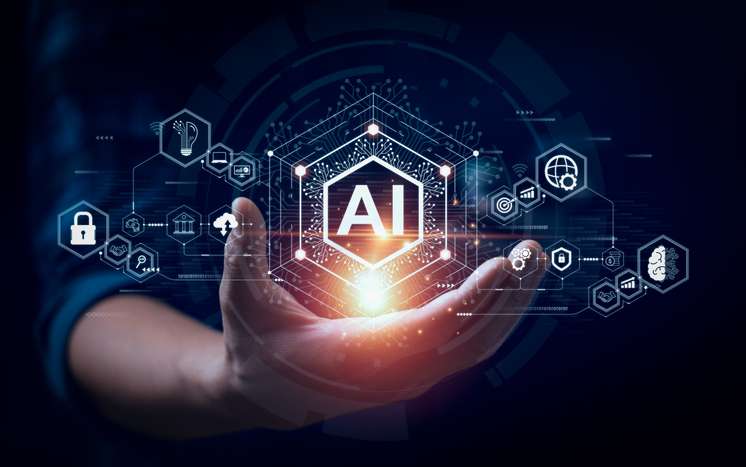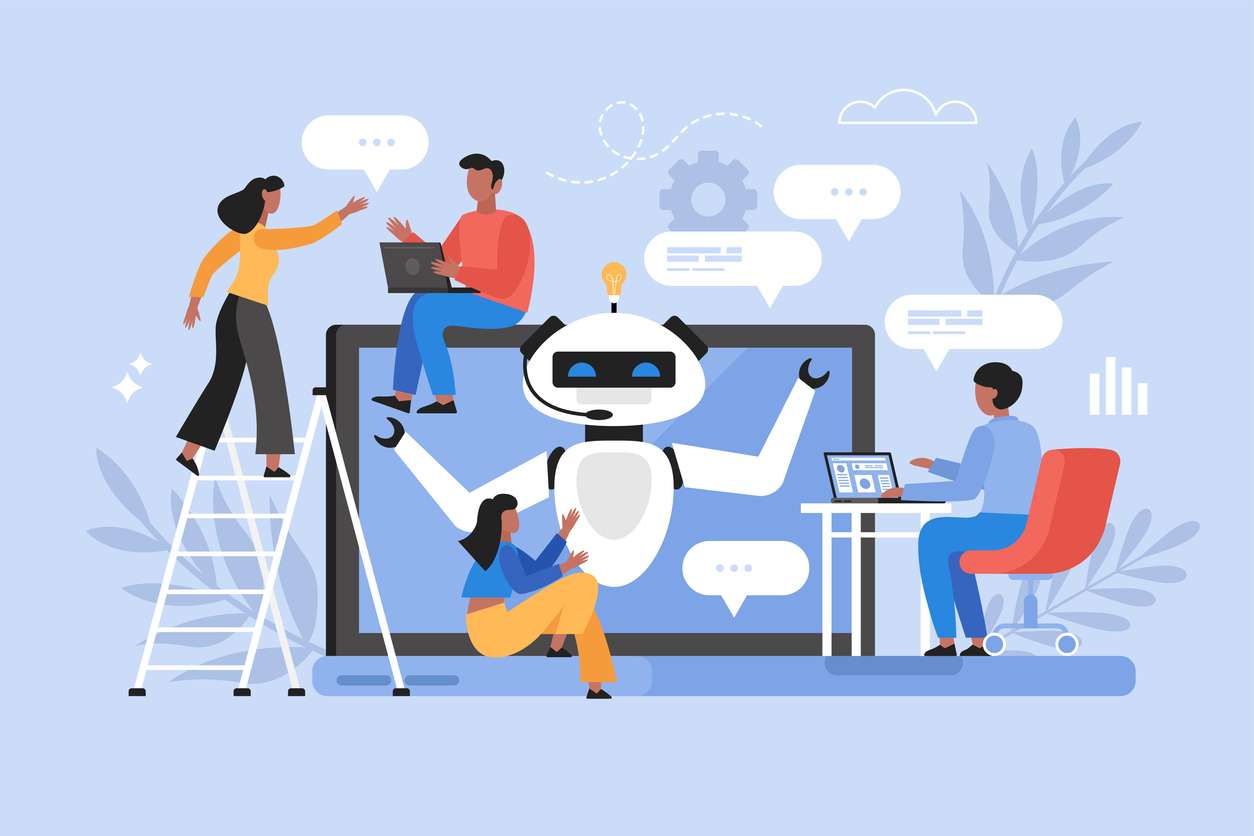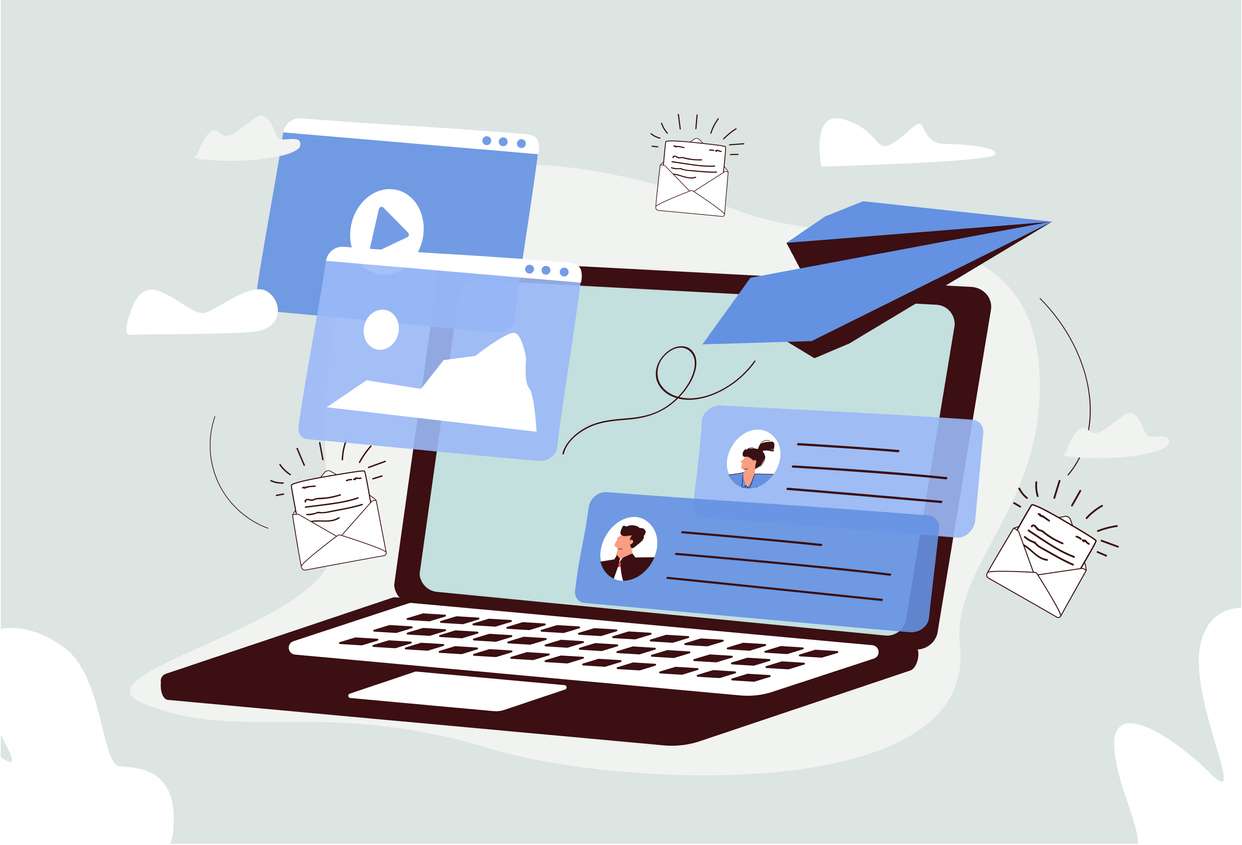But don’t worry, this revolution isn’t about replacing human connection; it’s about enhancing and amplifying it. AI can become your trusted ally, freeing up your time, supercharging your strategies, and enabling you to craft tailored, personalized experiences for every employee. The key lies in learning about AI, preparing for its integration, and being open to its possibilities.
Overview of the increasing role of AI in internal communications
As the digital landscape continues to evolve, so does the role of Artificial Intelligence (AI) in internal communications.
What is AI? AI refers to intelligent technologies that simulate human intelligence and automate tasks, allowing organizations to leverage data, improve processes, and enhance communication strategies.
AI is transforming internal communications by introducing innovative solutions and capabilities. From intelligent chatbots that provide instant support to natural language processing that enables voice-based communication, AI offers a range of functionalities. It empowers organizations to automate routine tasks, gain valuable insights from data analytics, and personalize communication to meet employees’ unique needs.
In the following sections, we’ll explore the potential of AI in internal communications. By harnessing the power of AI, internal communication managers can confidently navigate the evolving digital landscape and elevate their communication strategies to new heights.

The Potential of AI in Internal Communications
AI sounds great, but how can you use it in your day-to-day role? What practical benefits does it offer?
Enhancing Employee Engagement
Employee engagement lies at the heart of effective internal communications. And guess what? AI is here to help you better engage employees.
Personalized content: Imagine delivering tailored content to each employee based on their preferences, roles, and interests. With AI, intranet platforms can recommend information that resonates with employees. This level of personalization creates a sense of relevance and connection, boosting engagement like never before.
Real-time feedback: With AI-powered tools, you can easily collect real-time data. By analyzing usage and engagement, AI algorithms can pinpoint areas for improvement. This valuable feedback loop allows for timely adjustments, addresses concerns, and fosters a culture of open communication.
Gamification and rewards systems: Who said internal communications can’t be fun? AI-driven gamification techniques inject excitement and motivation into the mix. By incorporating game-like elements and reward systems, internal communication platforms create a sense of friendly competition, encourage participation, and recognize achievements. This gamified approach makes communication engaging, driving higher levels of involvement.
Improving Communication Efficiency
Efficiency is the name of the game when it comes to internal communications, and AI is the secret weapon. Let’s explore three ways AI can revolutionize communication efficiency:
AI-powered chatbots: Picture having intelligent chatbots that provide instant help and answers to employee questions. These virtual assistants seamlessly integrate into communication platforms, intranets, or messaging apps, giving employees easy access to information and resources.
Automating routine tasks and processes: Say goodbye to time-consuming manual tasks. AI automates repetitive operations such as email notifications, reminders, and content scheduling. You can free up valuable time and energy, allowing your team to concentrate on crafting engaging content and analyzing communication metrics.
Enabling Data-Driven Decision Making
Data is a goldmine for shaping effective internal communications strategies, and AI is the key to unlocking its full potential.
Utilizing AI for data analytics and insights: AI’s knack for analyzing vast amounts of data allows you to extract valuable insights. By leveraging AI-powered analytics tools, you better understand employee engagement, content performance, and communication effectiveness. These data-driven insights guide decision-making, enabling continuous improvement and optimization.
Predictive analytics for understanding employee needs: AI-powered predictive analytics models dive into data to identify patterns and trends in employee behavior. With this knowledge, you can proactively anticipate employee needs and preferences, tailoring your communications.
While AI brings immense benefits to internal communications, it’s essential to consider potential challenges and drawbacks. Let’s explore the cons and how we can navigate them effectively:
Potential job displacement and employee concerns: As AI takes on certain tasks and processes, there may be concerns about job displacement and the changing nature of work. But here’s the truth: AI is not here to replace us but to augment our capabilities. It’s time to embrace a growth mindset and foster a culture of continuous learning and reskilling. Remember, it’s not the first time we’ve faced these questions; we had the same fears when the internet was born! Yet we reskilled, adapted, and eventually thrived.
Privacy and data security challenges: AI relies on data, and with great data comes great responsibility. Compliance with data protection regulations and robust security measures are non-negotiable. You should ensure any AI tools you implement strongly focus on privacy to protect employee data.
Ethical considerations and bias in AI algorithms: AI algorithms are only as unbiased as the data they are trained on. Being vigilant and proactive in addressing biases within AI systems is crucial. Transparency, accountability, and diversity in AI practices are vital to ensure that our AI-driven communications are ethical and equitable.
Implementing AI in Internal Communications
Planning and Strategy
Are you ready to embrace AI-powered internal communications?
Buckle up and get ready for a transformative journey! Implementing AI requires careful planning and a well-defined strategy. Let’s dive into the key steps that will set you up for success:
Step 1: Assessing organizational needs and goals
Before diving in and subscribing to every AI tool, take a step back. First, consider your current communication landscape and identify pain points, challenges, and where AI can make a real difference. Look for areas that could benefit from AI-powered solutions and align your AI implementation with your organization’s strategic objectives.
Step 2: Identifying suitable AI solutions and technologies
The AI market is brimming with innovative solutions, but finding the right fit for your organization is key.
Explore the AI solutions and technologies available, from intelligent chatbots to analytics platforms and personalization engines. Evaluate their features, capabilities, integration options, and scalability. Look for solutions with user-friendly interfaces and seamless integration with your existing communication systems.
Better yet, check if your current tools already have AI capabilities or plans to implement them. At Powell Software, we’re rolling out AI capabilities to our digital workplace solutions. Our Powell Intranet customers are benefiting from lots of new functionalities.
Change Management and Adoption
Embarking on an AI-driven journey in internal communications? Get ready to lead your team through a transformative change! Implementing AI requires effective change management and fostering employee adoption.
Employee training and upskilling programs: Empower your employees with the right knowledge and skills to confidently embrace AI technologies. Offer training programs, workshops, and engaging online resources to familiarize them with AI-powered tools. Hands-on training sessions will give your team the practical know-how they need to leverage AI fully.
Addressing concerns and fostering buy-in: Change can spark concerns and resistance, but fear not, open communication is the key. Proactively address any worries and misconceptions your employees may have about AI implementation. Be transparent about the purpose and benefits of AI in internal communications, emphasizing that it’s here to augment human capabilities, not replace them. Listen to employee feedback, engage in open dialogue, and make them a part of the process.
Continuous evaluation and improvement: AI is a continuous improvement and refinement journey. Implement a feedback loop and regularly evaluate the impact of AI on employee engagement, communication efficiency, and data-driven decision-making. Gather feedback from your team. Use these insights to fine-tune your AI strategies and address any challenges.
The Future of AI in Internal Communications
Emerging trends and technologies
The future of AI in internal communications holds immense potential. Here are some emerging trends and technologies to watch out for:
Natural Language Processing (NLP) advancements: NLP will continue evolving, enabling more sophisticated voice-based interactions and language understanding. Improved NLP algorithms will enhance AI-powered chatbots, voice assistants, and language analysis tools, making communication more natural and intuitive.
Enhanced personalization through AI: AI will continue to advance personalization capabilities, allowing internal communication managers to deliver highly tailored content and recommendations to employees. By leveraging AI algorithms and machine learning, communication platforms can understand individual preferences, behaviors, and context to provide hyper-personalized experiences.
AI-driven sentiment analysis and employee feedback: AI-powered sentiment analysis tools will become more refined, enabling deeper insights into employee sentiments and feedback. AI algorithms will analyze communication data, social media sentiment, and other sources to understand employee perceptions, enabling targeted actions and improvements comprehensively.
Conclusion
The integration of AI in internal communications brings endless benefits and challenges. AI enhances engagement, streamlines communication, and empowers data-driven decisions. Embrace AI’s power to revolutionize internal communications. Leverage data insights, automate tasks, and deliver targeted messages for engaged employees. Yet, we must address job displacement, privacy, and ethical concerns.
The future of AI in internal communications is promising – but remember, AI should enhance, not replace, human interaction to create impactful communication experiences.



